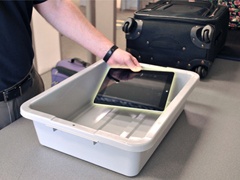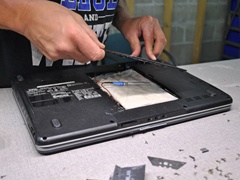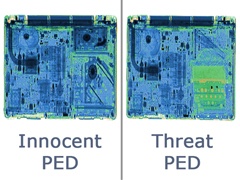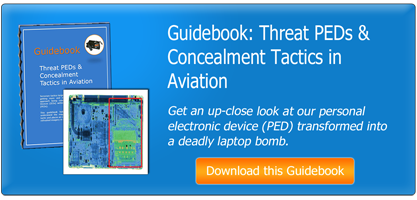 As specific airports facing the large PEDs ban implement stricter security controls, governments have been lifting restrictions on a case by case basis. The personal electronic device (PED) ban prohibits passengers from carrying large electronics such as tablets, eReaders, and laptops aboard certain aircrafts flying direct from one airport to another.
As specific airports facing the large PEDs ban implement stricter security controls, governments have been lifting restrictions on a case by case basis. The personal electronic device (PED) ban prohibits passengers from carrying large electronics such as tablets, eReaders, and laptops aboard certain aircrafts flying direct from one airport to another.
The main concern centers on select airports with insufficient security measures in place to prevent a new type of threat from entering secure areas. Threat PEDs cleverly use everyday consumer electronics to conceal improvised explosive devices (IEDs). The resulting product is items such as laptop bombs. Airports worldwide must reevaluate current security controls and if necessary, implement additional measures to effectively intercept threat PEDs at the checkpoint.
Complexity of Threat PEDs
 Improvised explosive devices don’t have to be large and elaborate. A small device placed in the right location and detonated at the right time is all it takes to cause massive destruction and harm. That’s why personal electronic devices have been chosen as ideal for concealing IEDs. They are just large enough to contain all IED components within, but can cause extensive damage at their relatively small size.
Improvised explosive devices don’t have to be large and elaborate. A small device placed in the right location and detonated at the right time is all it takes to cause massive destruction and harm. That’s why personal electronic devices have been chosen as ideal for concealing IEDs. They are just large enough to contain all IED components within, but can cause extensive damage at their relatively small size.
Comprehensive Security Training
Airport checkpoints must be staffed with diligent personnel that are security culture minded. The industry and public depend on it. Competency on the job starts with comprehensive security training for all airport personnel. In particular, those working in checkpoint lanes must receive training integrated with topics on general security, threats and prohibited articles, X-ray screening, Explosives Trace Detection, passenger search, and bag search.
Detecting Threat PEDs
 Certain screening techniques are better suited for exposing certain threats and prohibited items than others. There is no one size fits all approach. For threat PEDs in particular, security screeners must recognize that a visual inspection alone is not enough. Some threat PEDs may look completely normal on the outside and be advanced enough to power on briefly during inspection to ease any suspicion of tampering. As a result, X-ray screening is a better approach for detecting this type of threat.
Certain screening techniques are better suited for exposing certain threats and prohibited items than others. There is no one size fits all approach. For threat PEDs in particular, security screeners must recognize that a visual inspection alone is not enough. Some threat PEDs may look completely normal on the outside and be advanced enough to power on briefly during inspection to ease any suspicion of tampering. As a result, X-ray screening is a better approach for detecting this type of threat.
Screeners who have had a lot of X-ray interpretation practice will recognize how most laptops, tablets, or eReaders have the same types of components within and the same typical colors represented in an X-ray image. When presented with one that’s been tampered with, they may notice the absence of certain components and the addition of foreign materials in the X-ray. Pair this with an in-depth knowledge of IEDs and screeners will be equipped to intercept any threat PED from entering the secure area.
Conclusion
Although the vast majority of people pose no harm to the aviation industry, the very small percentage that exists requires airports to tighten security and put proper detection measures in place to keep the public safe. Building a strong security culture is paramount. Let us know your thoughts on threat PEDs and how industry and governments have responded to it.

